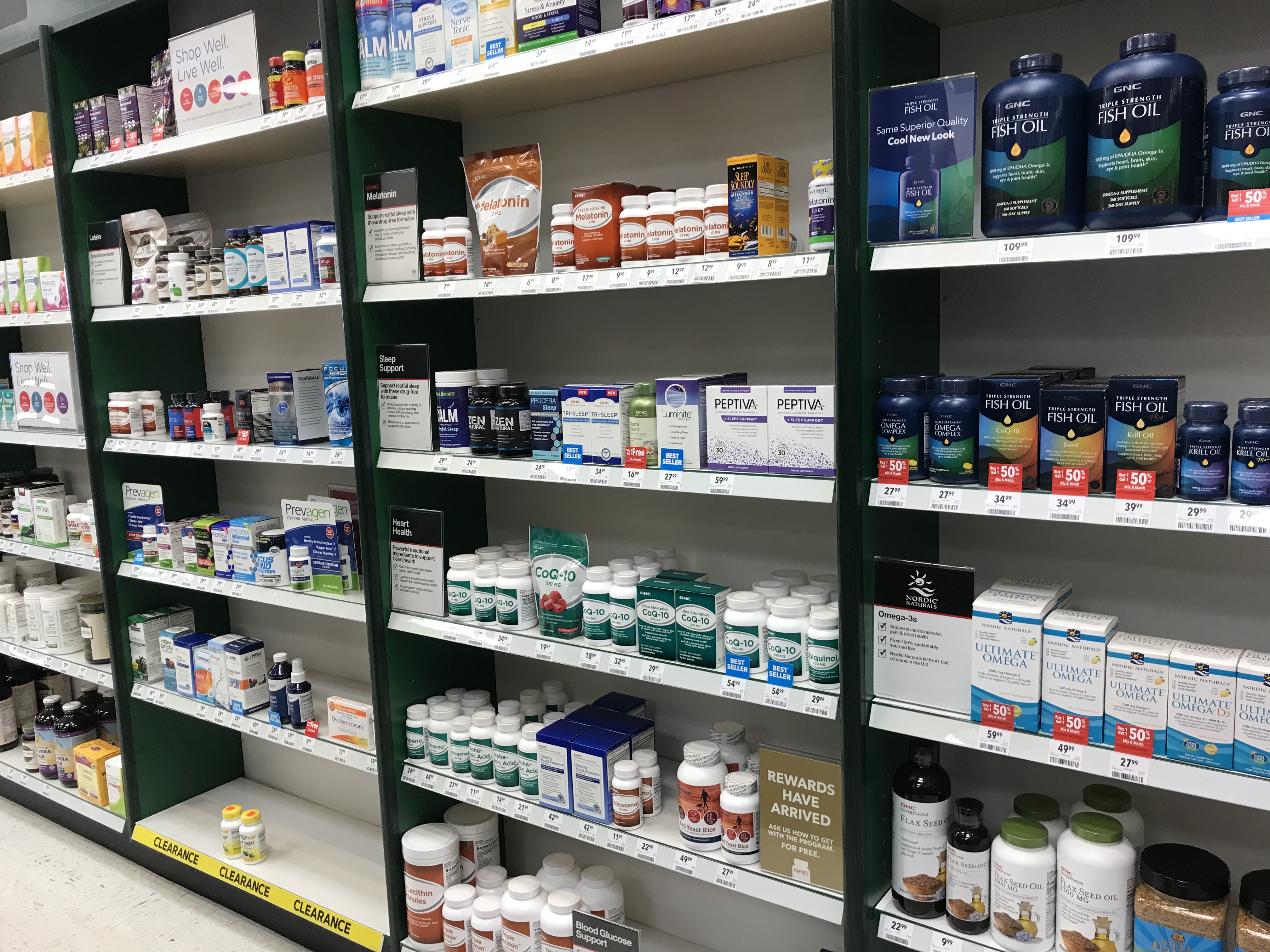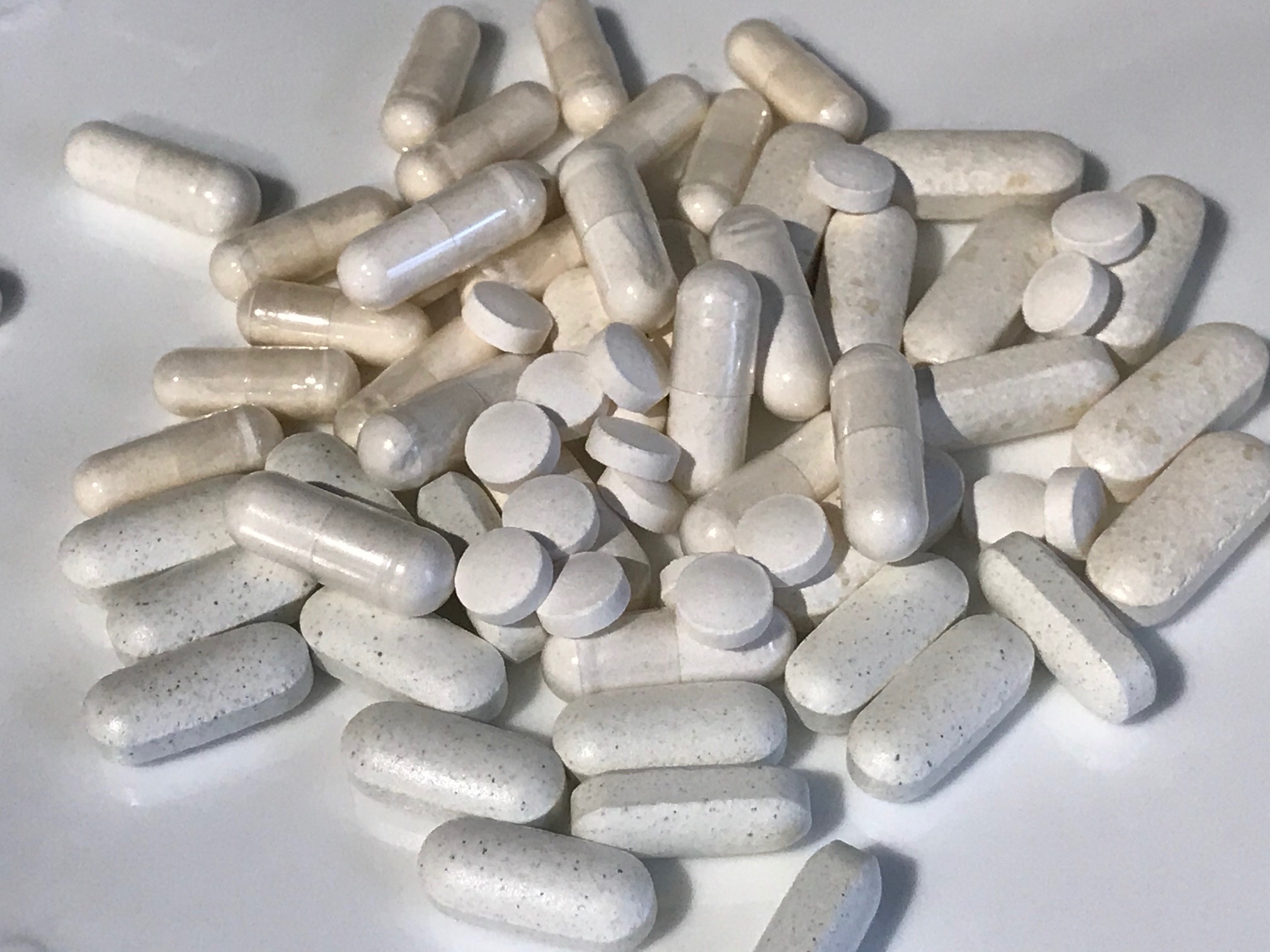Question: Can you test supplements with an XRF? Answer: Not in most cases. [Read post for details].
Question:
I get this question quite often: “Can you test supplements with an XRF instrument?”
So I thought it was time for a blog post with the answer! 🙂
Answer:
In most cases, it is neither appropriate nor meaningful to test supplements (or food products for that matter) for Lead (or other heavy metals) using XRF technology.
Why is that?
- The high-precision XRF instrument that I use detects Lead levels down to single digit Parts Per Million (ppm).
- Consumer goods are considered unsafe (from a Lead-perspective) if they are manufactured specifically with the intention of being used by children yet have XRF detectable Lead levels of 90 ppm or greater in the paint, glaze or coating.
- Food (and water, and anything else meant to be routinely directly ingested) is generally considered toxic in single- or double-digit Parts Per Billion (ppb), not parts per million (ppm).
- There are 1,000 ppb in ONE (1) ppm.
- This means that even levels BELOW 1 ppm (readings that come in at “< 1 ppm”) are still a problem when it comes to food and supplements.
So what does an XRF reading of “less than 1 ppm” mean exactly?
More specifically, what this means is that even if an item (like a supplement or protein powder) is “negative” (non-detect) using a very sensitive XRF instrument, with Consumer Goods mode installed, the “non-detect” reading only indicates that the item tested is “less than 1″ (or 2 or 3 or 4) parts per million (depending on the margin of error for the particular test). If a product is “less than 1 ppm” that could still mean the item is 700 or 800 or 900 ppb — far in excess of the levels considered safe in food items.
What are the current U.S. regulatory standards for food or supplements?
Bear in mind that United States government regulatory standards are generally not determined by science; they (more-often-than-not) reflect input from various industries that always lobby for less-stringent standards than the best, current science would suggest. Industry arguments for continuing to create toxic products range from “it would be too burdensome / too expensive” to get the Lead levels lower to “it’s not ‘technologically feasible'” (which generally turns out to not be the truth / just boils down to to their first complaint).
Current U.S. Federal Regulatory Standards:
- Bottled water is considered illegal for Lead content if it has more than 5 ppb.
- Water in school fountains is considered toxic and unsafe for children (According to The American Academy of Pediatrics) when Lead levels exceed 1 ppb.
- Tap water is considered to be unsafe for human consumption if it exceeds the [relatively high; not protective of human health] U.S. Federal standard of 15 ppb.
- Fruit juice is considered unsafe for children at 50 ppb and up.
- Dried fruit is considered toxic for consumption at 100 ppb and up.
- Candy is considered toxic for consumption at 100 ppb and up.
The entire range of toxicity levels for food, water, and other items intended to be ingested are several orders of magnitude lower than what most XRF technology can detect (including XRF technology designed to test consumer goods), which is why it is therefore not appropriate nor meaningful to test food items or supplements using an XRF instrument. Ideally food and supplements (and anything else a human might ingest in the course of normal use – like crayons!) need to be tested in a lab to be appropriately evaluated for heavy metal content down to single digit parts per billion.
Are there exceptions to this? Are there any supplements that might test positive for Lead using an XRF instrument?
Well, yes! As with everything there are some exceptions. Specifically, there are rare instances in which a food item or supplement WILL test positive using XRF technology — in which case that means the item is incredibly toxic. The best example of this in my experience is the bentonite clay that is used as the basis for Earthpaste toothpaste. Whenever I have tested that product with an XRF instrument, I come up with Lead levels in the 11 to 15 ppm range (and sometimes even higher!) This means the clay is positive for 11,000 to 15,000 ppb – WAY above the 100 ppb limit for Lead in candy (for example). This sort of case is rare – and, to date, I have not tested any other supplement or food item that was positive for Lead in the the range of single- or double-digit ppm using XRF technology.
Read more about the concerns for Lead in Earthpaste toothpaste products on this link.
The bigger problem…
While this issue could really be the subject of a thesis (rather than a blog post) there is a much bigger problem here: Supplement companies typically declare/advertise their products to be “Lead-free” or “Lead-safe” – or they describe them as “having met or exceeded limits set by current Lead testing standards” – when in most cases they are using a low threshold of detection of 5 ppm(!) So you might buy a supplement and then ask for the heavy metals testing paperwork on that supplement – and be given paperwork that shows lab testing that declares the product “negative” for Lead (but only down to 5 ppm.) In theory this means the supplement could be positive for levels as high as 4,999 ppb. Let that sink in.
This is why I don’t recommend supplements or similar products — current regulatory guidelines in this matter are not strict enough to support consumer safety (and health). In my experience, I have not found a supplement company that tests their products to levels below 5 ppm – although I believe some may test down to low thresholds as low as 1 ppm — which is still not good enough (per the above explanation).
As always, thank you for reading and for sharing my posts. Please let me know if you have any other questions.
To read my other posts about supplements, click here.
To read my other posts about natural detox / natural chelation, click here.
Here’s one of my original posts on the subject too.
Tamara Rubin
#LeadSafeMama
Never Miss an Important Article Again!
Join our Email List





Just wondering, I am a vegan so I need to take a b12 supplement as well as iodine (its in seaweed but that also has high levels of lead) what supplement do you recommend that have been tested and have low levels of lead/heavy metals? because the thought of my supplements poisoning me are eating me alive
Ah – such a good question. My husband takes these supplements – I do not. We haven’t had his tested independently but he did a lot of research before choosing them. I will check with him and see what he uses.
T
Since you are now testing baby food has your stance on testing supplements changed? Vimergy supplements is brand highly recommended by Medical Medium aka Anthony Williams who has a huge following on Instagram. He recommends the use of supplements to help detox heavy metals from the body. Vimergy is quite an expensive brand and I’m curious to know if it’s truly worth the hype or if it’s just as toxic as any other supplement brand.
I am still “anti-supplement” in general – unless absolutely medically necessary and using pharmaceutical grade (prescribed by a doctor, prescription quality) products. They are all contaminated in one degree or another and none of the companies manufacturing them are doing sufficient testing to determine safety (from a heavy metals perspective). I am going to be working with these labs to test more products, so will hopefully start with some prenatal testing after we do some foods.
T